 System Tutorial
System Tutorial
 Windows Series
Windows Series
 What are the alternative disk management tools? What are the recommended alternative tools for disk management that come with Win10?
What are the alternative disk management tools? What are the recommended alternative tools for disk management that come with Win10?
What are the alternative disk management tools? What are the recommended alternative tools for disk management that come with Win10?
php editor Xigua introduces to you the disk management alternative tool that comes with Win10. In addition to the disk management tools that come with your system, there are alternative tools that can help you better manage disk space. These tools usually have richer functions and friendlier interfaces, making disk management more convenient and efficient. Next, let’s take a look at some recommended disk management alternative tools that come with Win10.
About Win10’s built-in disk management tool
Speaking of Win10’s built-in disk manager, many people may still be unfamiliar with it. When we talk about viewing disks, the first thing that everyone thinks of may still be C, D, E, F drives, etc. seen in File Explorer or this computer.
Compared with File Explorer, Windows Disk Management Tool cannot view and manage the specific data in each disk, but it has more disk partition-related functions, which can help you expand partitions, compress partitions, It is a very good system built-in utility that can perform various tasks such as deleting partitions and creating new partitions. What are its commonly used functions? We simply list it for you as follows:
- Create, delete and format partitions.
- Change the drive letter and path.
- Mark the partition as active.
- Expand and compress partitions.
- Convert empty MBR to GPT disk and vice versa.
- Convert empty dynamic disk to basic disk, etc.
There are many more functions, it is difficult to list them all one by one. You can open the disk manager to explore and view by yourself.
How to use disk management tools to expand partitions
Perhaps most Windows 10, 11 desktop or laptop users have encountered the problem of insufficient disk space, especially the system partition. For this, you can use the disk management tool that comes with Win10 and use partition expansion to expand the size of the system partition.
Step 1. Press Win R to enter diskmgmt.msc and press Enter to open the disk management tool.
Step 2. Right-click the partition you want to extend (such as C partition), then select "Extend Volume" and follow the prompts to easily complete the C drive expansion.
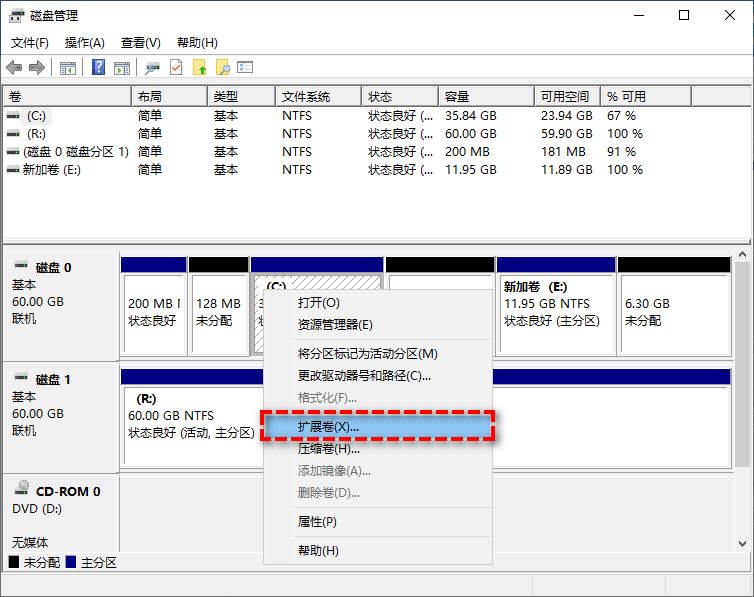
But some people may encounter such a problem when using the Windows Disk Management tool to extend a volume: the Extend Volume option is grayed out and this function cannot be used. why is that? Is there something wrong with this tool?
of course not. This is because Win10's built-in disk management tool has limitations when extending partitions. That is, you can only use the extend volume function when there is unallocated space adjacent to the right side of the target partition you want to extend. Otherwise, it will not work. And in addition, if the partition you want to extend is a logical partition or a partition with a non-NTFS file system, you cannot use the extend volume function.
Better hard disk management alternative software: Partition Assistant
In order to help you solve the many limitations of the built-in disk management tools in Windows systems, we provide you with a better hard disk management alternative software ——AOMEI Partition Assistant! When you use Partition Assistant to expand a partition, no matter where the unallocated space is on your hard drive, and whether there is unallocated space on your hard drive, you can easily complete the partition expansion without losing any data. Compared with Since Win10 comes with its own disk management tool, its practicality is not at the same level.
Download and install AOMEI Partition Assistant, and then follow our demonstration tutorial to learn how to use Partition Assistant to perform partition expansion tasks!
Method 1: Use the merge partition function
If you have existing unallocated space on your hard disk, the "Merge Partitions" function of the Partition Assistant allows you to merge one partition at a time on the same hard disk. or multiple unallocated spaces, and their locations can be ignored. Compared with disk management tools, there are fewer restrictions on the adjacent right side, which is more convenient.
Step 1. Open the Partition Assistant, right-click the partition you want to extend in the main interface, and select "Merge Partitions".
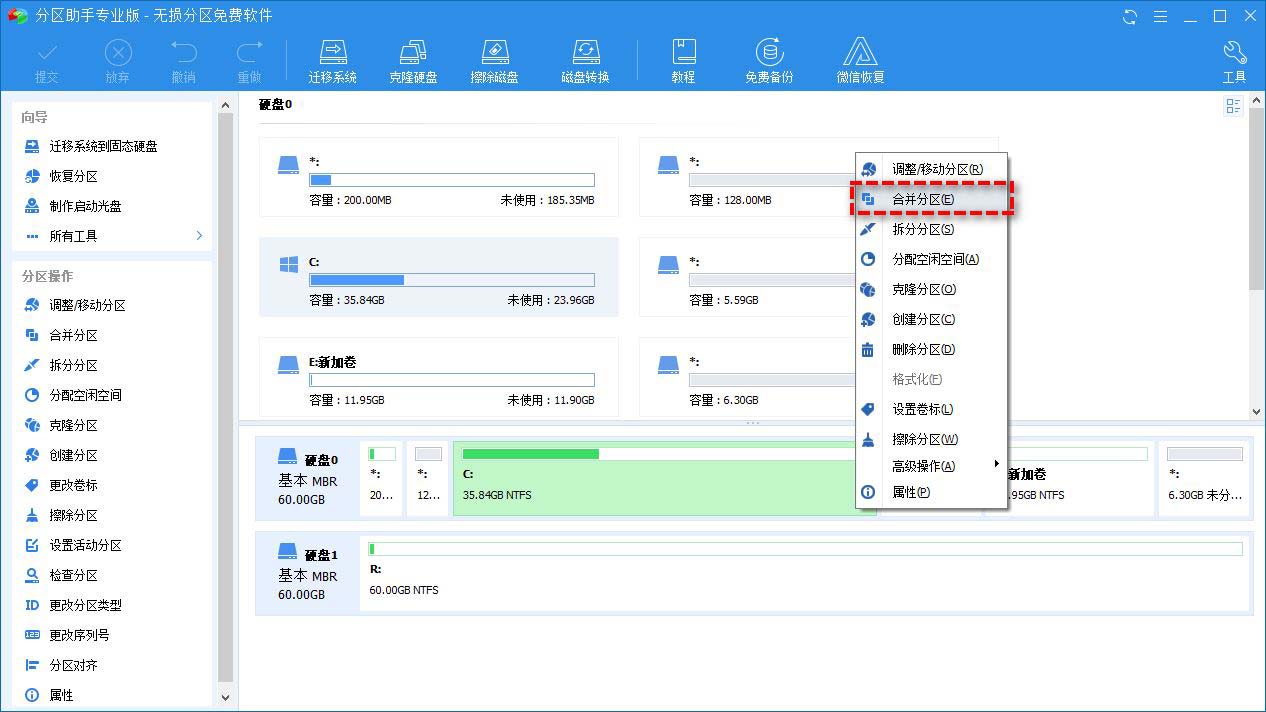
#Step 2. Select the unallocated space you want to merge in the pop-up window and click "OK".
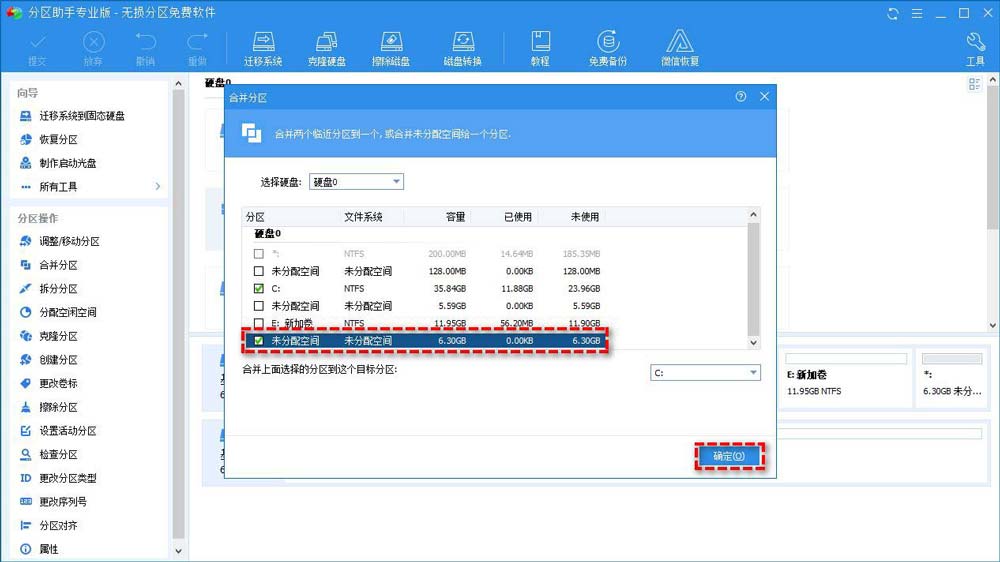
Step 3. Return to the main interface, click the "Submit" button in the upper left corner to preview the upcoming task, and click "Execute" after confirming that it is not adjacent. The unallocated space is merged into the partition you specify.
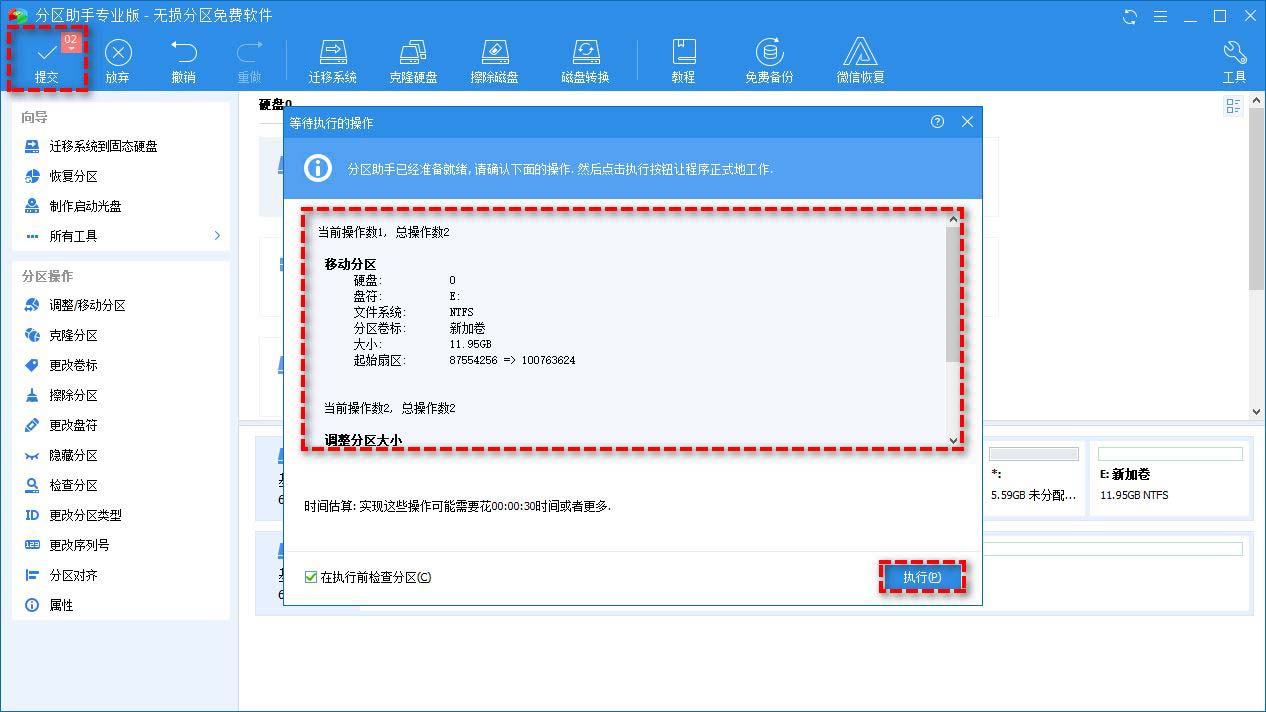
Tips on merging partitions:
- ① If there is no unallocated space on your hard disk, Partition Assistant can also merge two adjacent normally used data partitions.
- ② You can merge the data partition into the system partition, but you cannot merge the system partition into the data partition.
- ③ Before performing the merge task, please ensure that no programs are running in the involved partitions.
Method 2: Use the allocate free space function
So if there is no unallocated space on our hard disk, how can we extend the partition size? This is indeed true. For most ordinary users, there is generally no unallocated space on the hard disk. In order to help such users complete the partition expansion task, we provide a more practical "allocate free space" function. It can help you allocate the available space in any partition on the same hard disk directly to any partition you specify. Compared with the disk management tool that comes with Win10, it has a wider scope of application and is more practical.
Notes before starting the operation:
① If there are four primary partitions on the MBR disk and you want to split one of them, the partition being split will be automatically converted to logical Partition.
② If a disk has four primary partitions, the program will not allow you to split the system partition or boot partition, unless you can convert one of the other partitions from primary to logical, and then the program will Allows you to split the system partition and the newly generated partition will be automatically set as a logical partition.
Step 1. Open AOMEI Partition Assistant, right-click the partition with free space on the same hard disk in the main interface, and then select "Allocate Free Space".
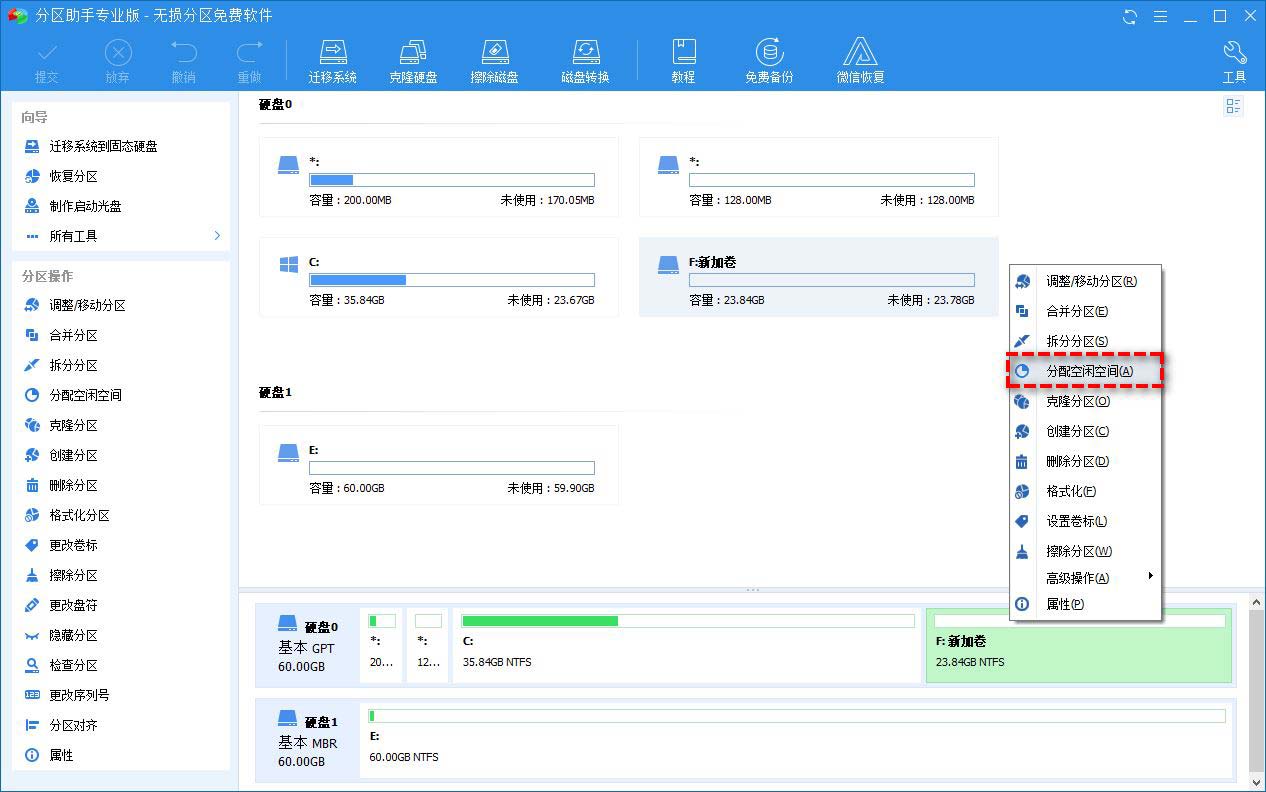
#Step 2. Select how much space you want to allocate to which partition in the pop-up window, and click "OK".
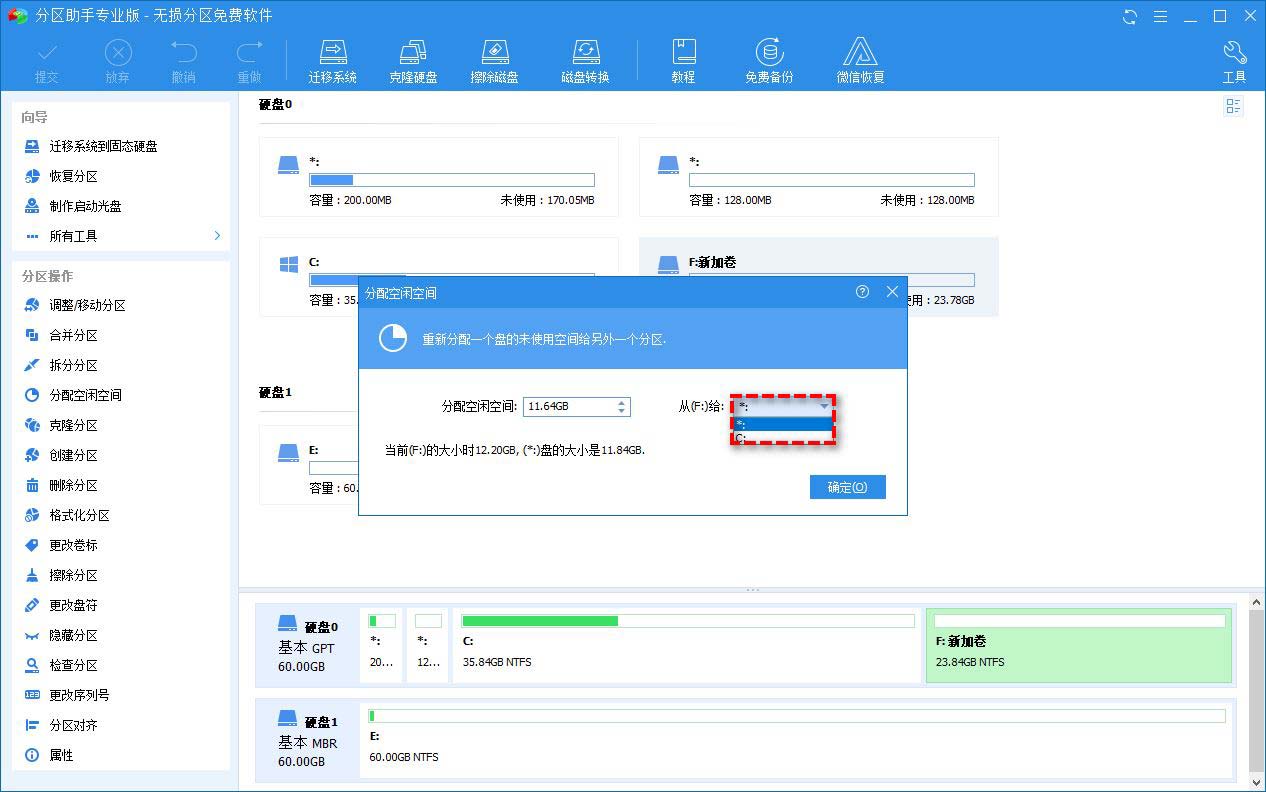
Step 3. Return to the main interface, click the "Submit" button in the upper left corner to preview the upcoming task, and click "Execute" after confirmation to start allocating space Task.
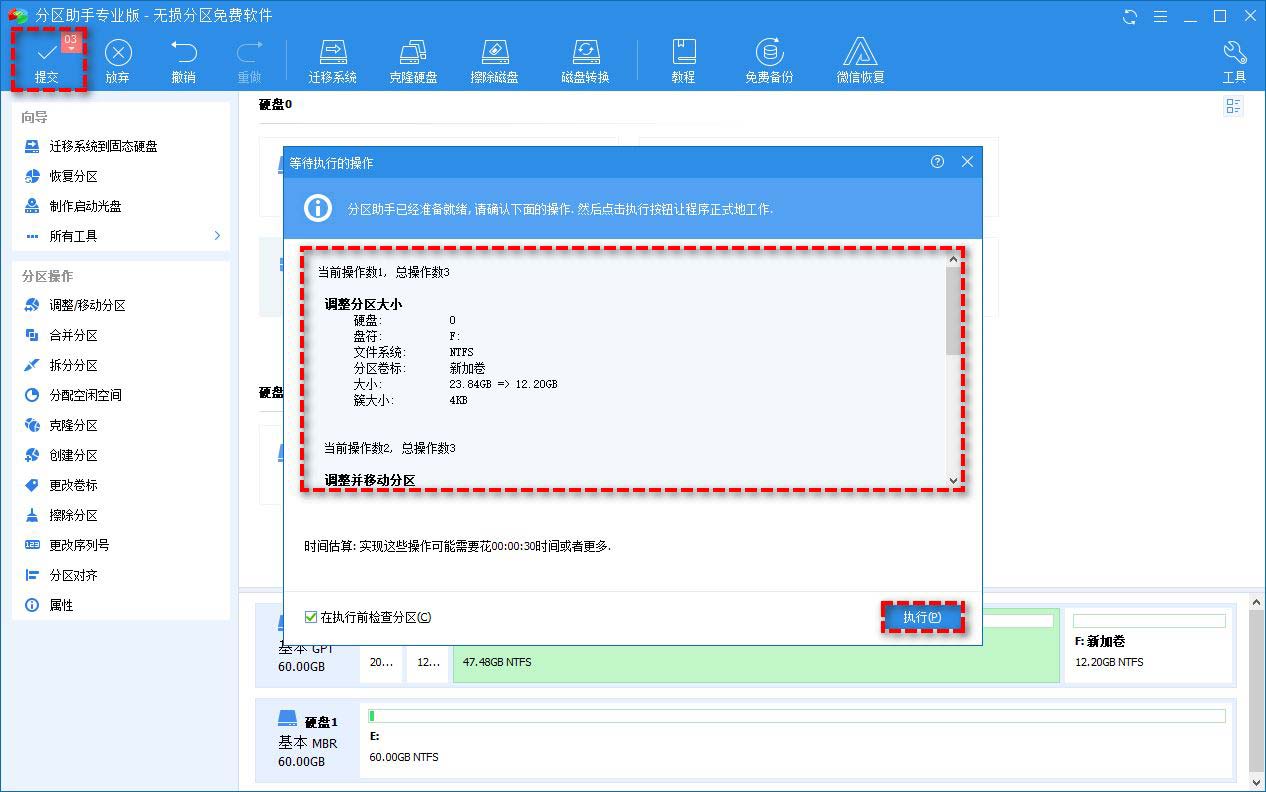
Comparison between AOMEI Partition Assistant and Disk Management Tool
To help you understand the advantages of Partition Assistant more clearly, we have listed The detailed table below is for your reference.
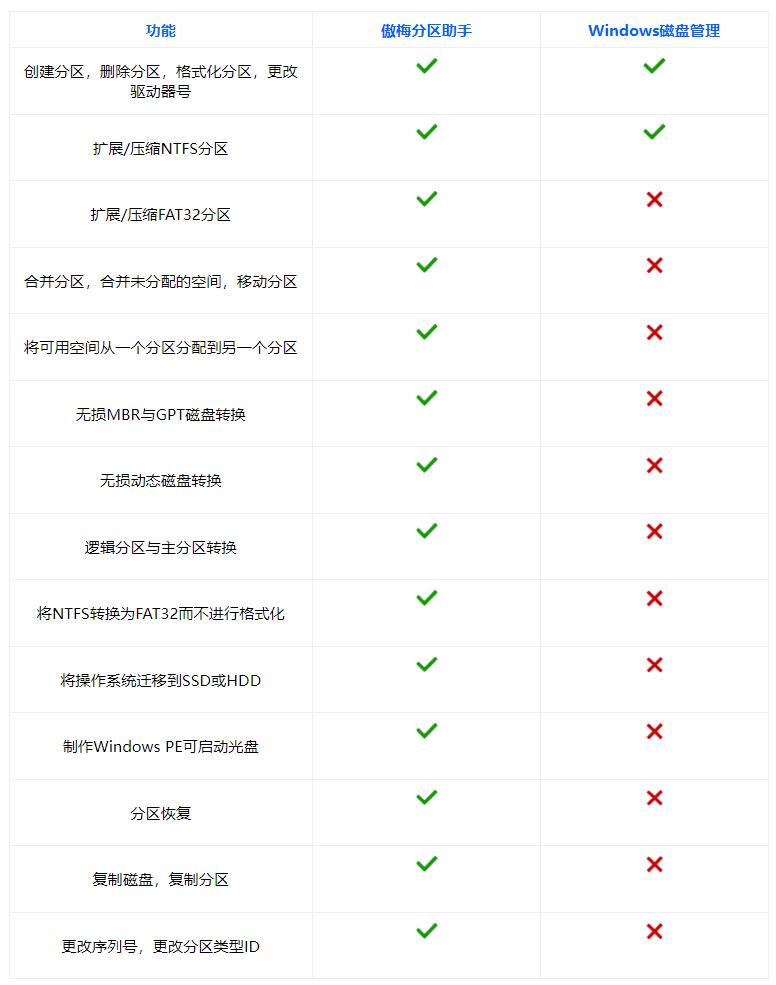
We can see from the table that Partition Assistant, as a hard disk management alternative software, has more diverse functions than Win10’s own disk manager and can easily Meet everyone's various disk partition management related needs.
Windows Disk Management Tool Recommendation
EaseUS todo backup
The best Windows disk management recommendation: This is developed by EaseUS and it is suitable for Windows desktop. It is a backup and disaster recovery software that helps in PC cloning.
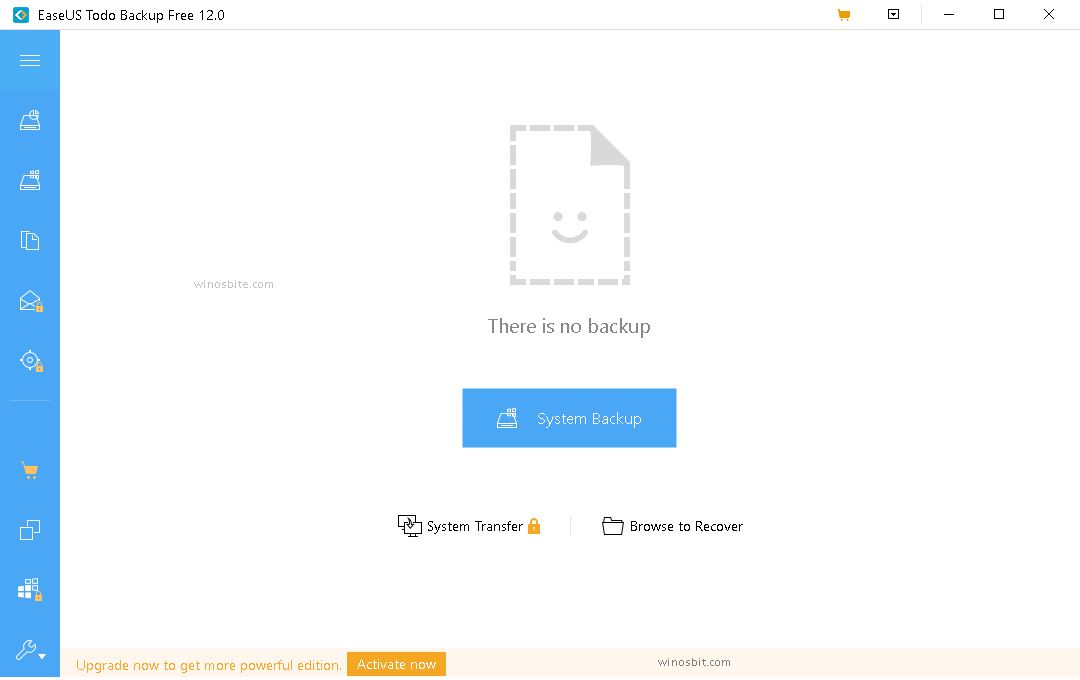
Collection of Windows Disk Management Tools: 10 Best Clonezilla Alternatives
Main Features.
It is loaded with a simplified interface making it easy to use.
It can back up your important files. In the long run, it saves you time and data.
This backup protects your data with one-click instant recovery option.
You can also schedule and run backups based on your schedule.
It performs full and partial disk partitioning sector by sector. This helps in replacing old disks.
Sometimes data is lost after a crash. This is not the case with easeUS, as it can restore your entire system.
It also makes copies of files in different formats that can be run on a single system.
Interesting Facts
It is complete, incremental and differential backup software making it healthy for Windows systems.
System support: It works with Windows 10.
DiskGenius
DiskGenius is a powerful disk management tool that integrates disk partition management and data recovery functions, and has almost all functions related to partition management. Not only that, it can also support GUID partition table, support various hard disks, memory cards, virtual hard disks, RAID partitions, and provide unique functions such as fast partitioning and integer partitioning. It can easily recover even lost partitions, especially in the professional version, its functional algorithm is more sophisticated.
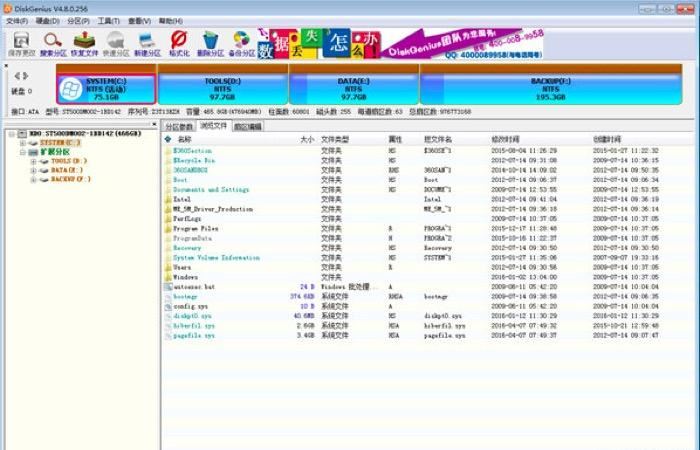
However, this disk management tool also has some shortcomings. For example, when using DiskGeniusV4.9.5.508, some partitions will be invalid or overlapping. When using MAXDOS9.0-spfdisk-select the hard disk, the error "Partitions overlap" will be prompted. Or the information is incorrect!".
Tuxera NTFS for Mac
Tuxera NTFS for Mac is a disk reading and writing tool suitable for Mac OS systems. Different from traditional disk management tools, this software is more flexible and convenient, and it is also very easy to use. It supports reading and writing NTFS format disks on Mac. As long as we successfully install the software on Mac and insert the NTFS format disk into the Mac system, the disk will be automatically recognized by the software and mounted into the software. The whole process does not need to be completed manually. ,Very convenient.
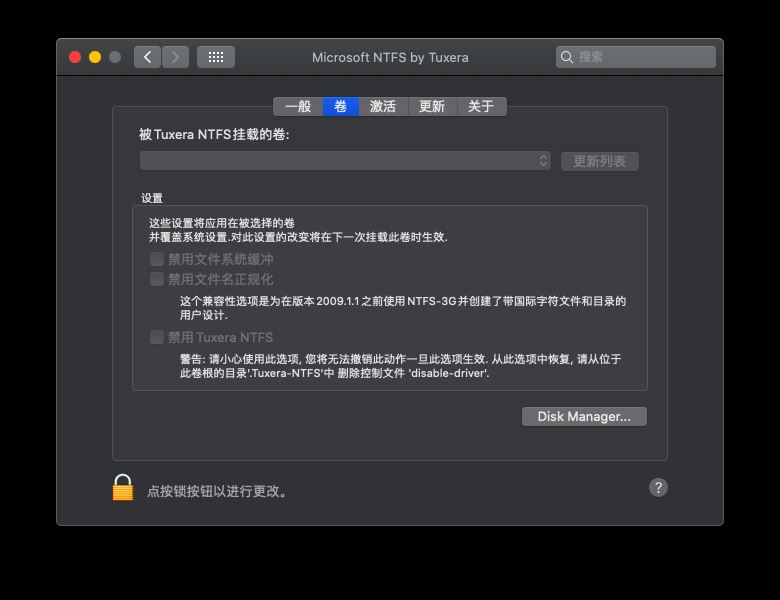
At the same time, we can also use the Disk Manager disk management function to perform routine checks and repairs on our system's disks, and we can also use this function to convert the disk format.
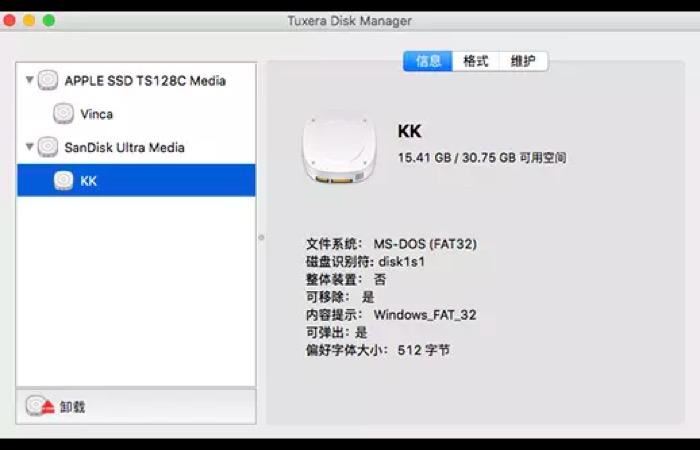
The above is the detailed content of What are the alternative disk management tools? What are the recommended alternative tools for disk management that come with Win10?. For more information, please follow other related articles on the PHP Chinese website!

Hot AI Tools

Undresser.AI Undress
AI-powered app for creating realistic nude photos

AI Clothes Remover
Online AI tool for removing clothes from photos.

Undress AI Tool
Undress images for free

Clothoff.io
AI clothes remover

AI Hentai Generator
Generate AI Hentai for free.

Hot Article

Hot Tools

Notepad++7.3.1
Easy-to-use and free code editor

SublimeText3 Chinese version
Chinese version, very easy to use

Zend Studio 13.0.1
Powerful PHP integrated development environment

Dreamweaver CS6
Visual web development tools

SublimeText3 Mac version
God-level code editing software (SublimeText3)

Hot Topics
 System Restore prompts that you must enable system protection on this drive
Jun 19, 2024 pm 12:23 PM
System Restore prompts that you must enable system protection on this drive
Jun 19, 2024 pm 12:23 PM
The computer has a restore point, and when the system is restored, it prompts "You must enable system protection on this drive." This usually means that the system protection function is not turned on. System protection is a feature provided by the Windows operating system that can create system restore points to back up system files and settings. That way, if something goes wrong, you can revert to a previous state. When the system fails and you cannot enter the desktop to start it, you can only try the following method: Troubleshooting-Advanced Options-Command Prompt Command 1 netstartvssrstrui.exe/offline:C:\windows=active Command 2 cd%windir%\system32 \configrenSYSTEMsy
 What should I do if win10 does not switch users? Win10 login interface does not have the option to switch users. Solution
Jun 25, 2024 pm 05:21 PM
What should I do if win10 does not switch users? Win10 login interface does not have the option to switch users. Solution
Jun 25, 2024 pm 05:21 PM
A problem that Windows 10 users may encounter is that they cannot find the switch user option on the login interface. So what should I do if there is no switch user option on the win10 login interface? Let this site give users a detailed explanation of the problem of not switching user options in the win10 login interface. Detailed solution to the problem of switching user options on the Win10 login interface: Check user account settings: First, make sure you have multiple user accounts on your computer and that these accounts are enabled. You can check and enable the account by following these steps: a. Press Win+I keys to open Settings and select "Accounts". b. Select "Family & Others" or &ld in the left navigation bar
 How to permanently turn off real-time protection in win10? How to disable real-time protection function in win10 computer 0
Jun 05, 2024 pm 09:46 PM
How to permanently turn off real-time protection in win10? How to disable real-time protection function in win10 computer 0
Jun 05, 2024 pm 09:46 PM
Although the comprehensive anti-virus software that comes with Windows 10 system can continuously protect the security of your personal computer, sometimes it may also affect certain downloaded files. For some users, it may be more appropriate to temporarily turn off the real-time protection function. But many users don’t know how to permanently turn off the real-time protection feature on win10 system. 1. First, press the "Win+R" keys to open the run window, enter the "gpedit.msc" command to open the local Group Policy Editor interface; 2. Then, in the opened interface, click "Computer Configuration/Administrative Templates/ Windows Components/MicrosoftDef
 How to restore the default wallpaper in win10? One trick to quickly restore the default wallpaper in Windows 10 system
Jun 02, 2024 pm 02:07 PM
How to restore the default wallpaper in win10? One trick to quickly restore the default wallpaper in Windows 10 system
Jun 02, 2024 pm 02:07 PM
In Windows 10 system, if you want to return to the system default wallpaper, you can follow the following steps: 1. Right-click a blank space on the desktop and select Personalize in the pop-up menu. 2. This will open the Personalization window in Settings. In the left menu, click Background. 3. Under the "Background" settings, find and click the drop-down menu next to "Choosepicture", and then select Windows Default (Windows Default) or directly select a picture that looks like the default wallpaper in the picture preview below ( if there are multiple options). 4. If your system has multiple versions
 What should I do if Win10 takes a screenshot and crashes? How to solve the problem of Win10 flashing and then disappearing after taking a screenshot?
Jun 02, 2024 pm 12:48 PM
What should I do if Win10 takes a screenshot and crashes? How to solve the problem of Win10 flashing and then disappearing after taking a screenshot?
Jun 02, 2024 pm 12:48 PM
There are many reasons why the screenshot disappears after taking a screenshot in Win10. Users can first check the screenshot save location or adjust the screenshot settings, or check the animation effect to check it. If it really doesn't work, you can also choose to update the driver and operating system to perform the operation. Let this website carefully introduce to users the analysis of the problem of Win10 disappearing after taking a screenshot. Analysis of the problem after win10 takes a picture and it flashes and disappears 1. Check where the screenshot is saved: When you use the Win+PrtSc (PrintScreen) key combination to take a screenshot, the screenshot is usually saved in the C:\Users\YourUsername\Pictures\Screenshots folder. please
 Windows cannot start the Windows Audio service Error 0x80070005
Jun 19, 2024 pm 01:08 PM
Windows cannot start the Windows Audio service Error 0x80070005
Jun 19, 2024 pm 01:08 PM
The guy's computer appears: Windows cannot start the WindowsAudio service (located on the local computer). Error 0x8007005: Access denied. This situation is usually caused by user permissions. You can try the following methods to fix it. Method 1: Modify the registry to add permissions through batch processing, create a new text document on the desktop, save it as .bat, and right-click the administrator to go far. Echo==========================EchoProcessingRegistryPermission.Pleasewait...Echo================== ========subinacl/subkey
 What to do if the Win10 Task Manager crashes? How to fix the Win10 Task Manager crash?
Jun 25, 2024 pm 04:31 PM
What to do if the Win10 Task Manager crashes? How to fix the Win10 Task Manager crash?
Jun 25, 2024 pm 04:31 PM
Hello everyone, have you ever encountered the situation where the Windows 10 Task Manager keeps crashing? This function helps us a lot, allowing us to quickly see all running tasks, which is very convenient to use, right? However, some friends said that they encountered this problem and didn’t know how to solve it, so let me share with you the specific solution! Solution to Win10 Task Manager crash 1. First, press and hold the "Win" + "R" keys on the keyboard to open Run, enter "regedit" and press the Enter key. 2. Expand the folders and find "HKEY_CURRENT_USERSoftwareMicros
 What should I do if there are no pop-up reminders for calendar events in Win10? How to recover if calendar event reminders are gone in Win10
Jun 09, 2024 pm 02:52 PM
What should I do if there are no pop-up reminders for calendar events in Win10? How to recover if calendar event reminders are gone in Win10
Jun 09, 2024 pm 02:52 PM
The calendar can help users record your schedule and even set reminders. However, many users are asking what to do if calendar event reminders do not pop up in Windows 10? Users can first check the Windows update status or clear the Windows App Store cache to perform the operation. Let this site carefully introduce to users the analysis of the problem of Win10 calendar event reminder not popping up. To add calendar events, click the "Calendar" program in the system menu. Click the left mouse button on a date in the calendar. Enter the event name and reminder time in the editing window, and click the "Save" button to add the event. Solving the problem of win10 calendar event reminder not popping up





